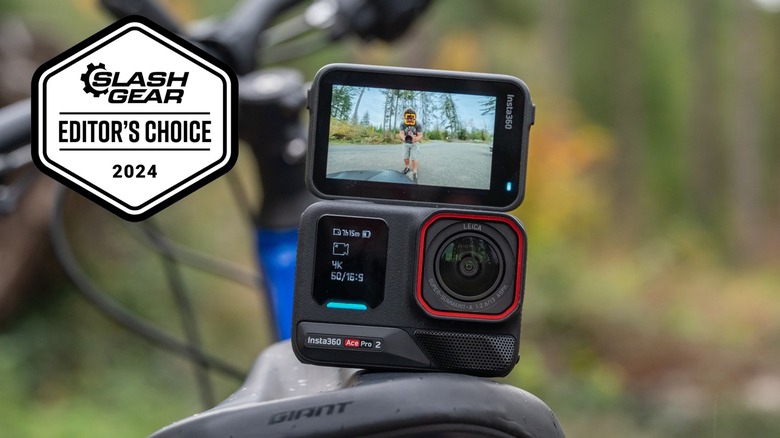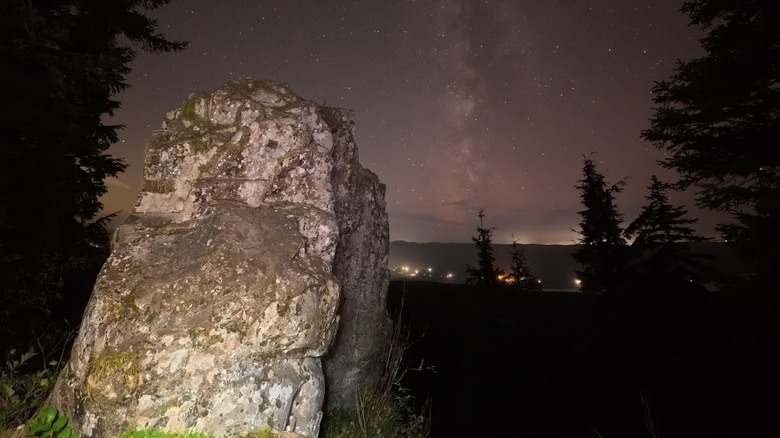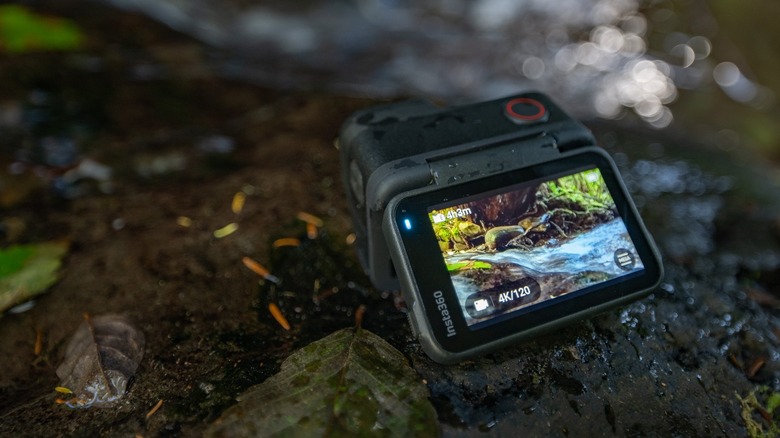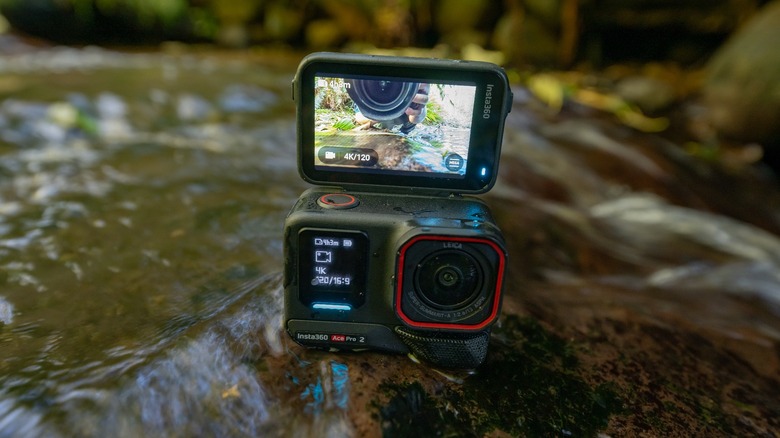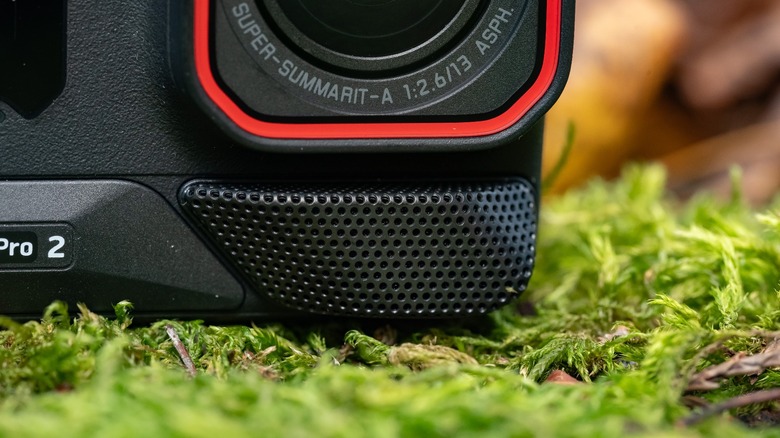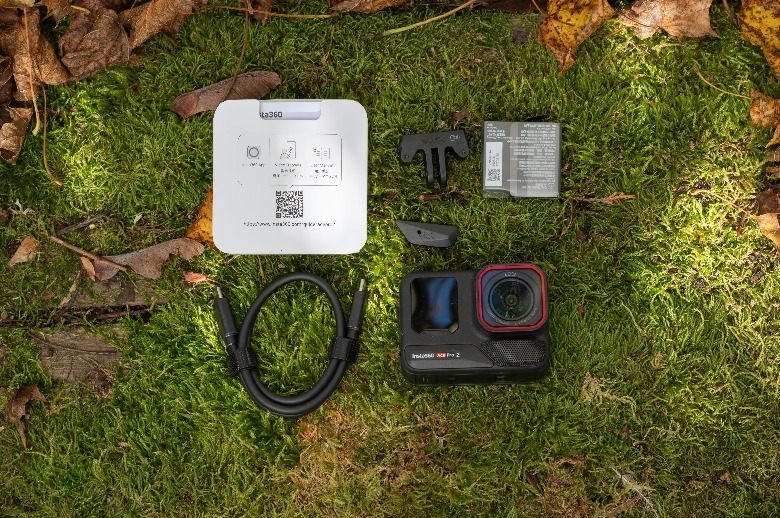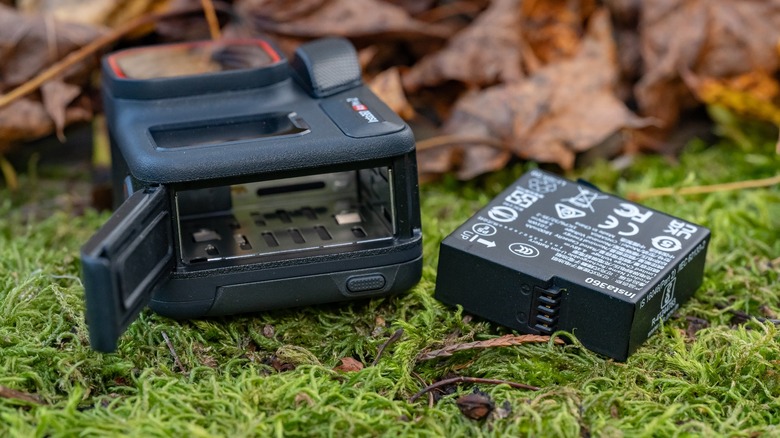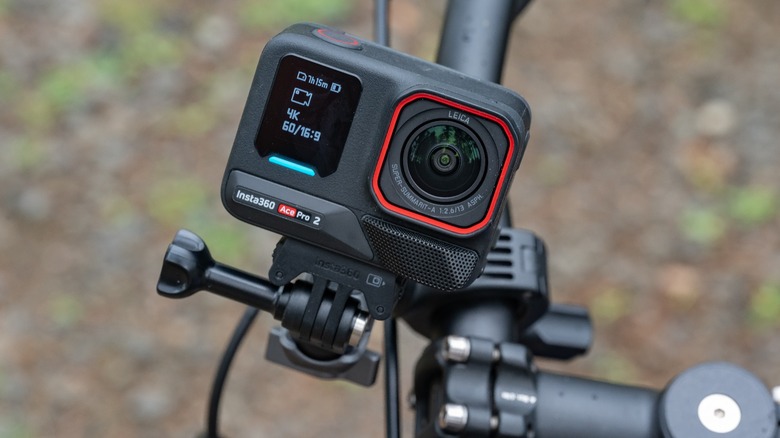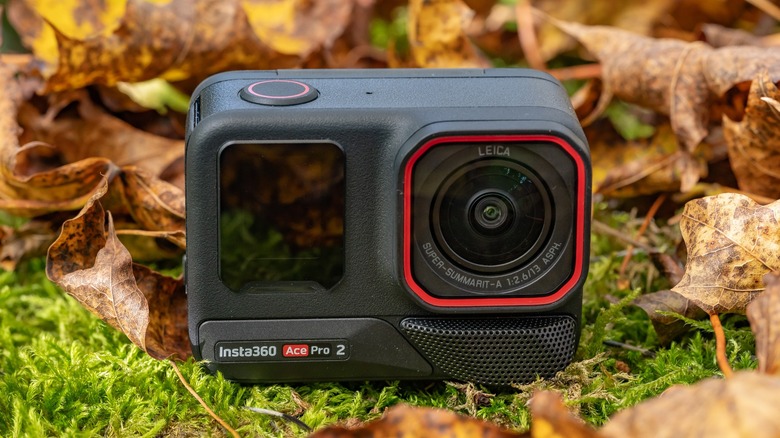Insta360 Ace Pro 2 Review: Double The Action Cam Power, Double The Fun
- Excellent new menu system
- LOG and timecode capability
- Wind resistant mic
- Articulating display
- Fantastic low light performance
- 4K 60fps capability in HDR and Pureview modes
- Battery life lags behind the competition
- Online activation required
We may receive a commission on purchases made from links.
Launching alongside the last autumn leaves, the Insta360 Ace Pro 2 is the last of the flagship action cameras to launch this year following close on the heels of DJI and GoPro. When I reviewed the original Ace Pro last year, I found it to not only match its competition blow-for-blow, but to even exceed them to some extent and squeak into a narrow lead for first place as the nominal best action camera of 2023. However, now the question is if Insta360 can do it again, as DJI and GoPro have both upped their game.
While it may appear that the upgrades are under the hood here, with the Ace Pro 2 largely remaining the same in terms of its appearance, there are some new physical design elements which hint at its new capabilities. Practically every aspect of the Ace Pro 2 has been improved to some extent, and at least on paper this is a very exciting little camera for those looking to step up their action camera game. Insta360 provided the Ace Pro 2 for this review.
New sensor brings upgraded image quality
The Ace Pro 2 may have the same size sensor as its predecessor, but don't let its width fool you; this sensor is all new and it opens up some exciting new capabilities. Where before the original Ace Pro could only shoot in full 8K resolution at up to 24fps, the Ace Pro 2 now goes up to 30fps at 8K. Also, the Active HDR, which was so much of a major feature in the first Ace Pro, is now available in 4K at up to 60fps, and can be toggled off if you don't want it (previously, it was permanently enabled at 4K 30fps).
Similarly the camera can shoot at up to 4K 60fps in "PureView" (low light mode) now, so you can record slow motion even in very dim conditions. PureView Plus (automatically enabled at 30fps in PureView mode) provides the best low light performance yet in any action camera, thanks to AI noise reduction.
Another key upgrade is in terms of color profiles. In addition to a Leica lens, the Ace Pro 2 now features Leica color profiles to get that Leica look. More importantly, an I-Log color profile is now available, something I'm extremely happy to see in an Insta360 camera; it is fantastic for post-production work.
The Ace Pro 2 has a wider 157 degree maximum field of view, as opposed to its predecessor's 151 degree FOV, which it takes full advantage of with a new "Megaview" mode that reduces distortion. Overall, the Ave Pro 2 is a big step up in terms of image quality (still photos look great too). A lot of this is thanks to the new sensor, but the fact that Insta360 has doubled the processing power of the Ace Pro 2 by including a dedicated AI chip may be an even bigger factor.
Improved image stabilization plus optimization for underwater filming
The Ace Pro 2 enjoys a significant boost to overall image stabilization, and the efficacy of the 45 degree and 360 degree horizon lock (which is only available in video mode). This was previously possible to apply later in Insta360's software. Now it's great to be able to have it in-camera so you can shoot with it enabled in real time.
A further upgrade for stabilization is in underwater mode, where the camera tunes itself to compensate specifically for motion underwater, as well as for the distortion of the water. It also engages screen lock so that you don't press anything accidentally on the display. Display lock is available on other action cameras, but it's great to have it bundled into a specific underwater mode which makes other key adjustments for underwater filming.
There's also a new dashcam mode, and the pre-recording mode has been upgraded from 90 to 120 seconds saved prior to pressing the record button.
Menu system is breath of fresh air
I absolutely love what Insta360 has done with the menu system on the Ace Pro 2. In fact, my first impression of the camera was that it's far easier to navigate and change settings than any other action camera I've used. It's super responsive, options are highly visible and logically laid out, and I never needed to dive deep into menu systems — all while user options have actually been increased over previous generations.
Another great addition to the software of the Ace Pro 2 is timecode for syncing multiple cameras together. Combined with the new I-Log color profile, these two upgrades very much help to justify the "Pro" in "Ace Pro," though they are already present in other action cameras.
The Insta360 app is as excellent as ever, and if you're not so experienced at editing video in post production, it offers a competent auto editing feature.
Upgraded articulating screen
I was a big fan of the articulating touchscreen on the original Ace Pro, which has been improved with the Ace Pro 2 to be slightly larger, clearer, more secure, and most importantly significantly more durable. Insta360 claims to have doubled the folding durability of the display, which is a big deal on a device meant to be able to take a hit and keep on filming, where a folding screen could be a potential weak point.
Folding screens have become practically ubiquitous on mirrorless cameras, and I use this feature all the time on my Nikon Z8. It's just as useful on action cameras, if not more so, and in many situations it made getting a particular shot easy whereas if I'd been using a GoPro or other fixed-screen action camera it might have been tricky to compose my shot. This is particularly true of shots where I was filming underwater while wading in the shallows.
Swappable wind screen and lens guard, plus new audio features
The big standout change to the design of the Ace Pro 2 is the new interchangeable wind screen for the front facing microphone. The wind screen installed by default is an extended cage filled with foam, which does a good job of physically canceling out wind noise. You will want to change this out for an underwater microphone cover (included in the box) when you plan to go swimming with the camera.
The Ace Pro 2 also integrates new audio algorithms, including wind reduction, stereo, and voice enhancement for different scenarios. Additionally, you can connect wireless external microphones such as the DJI Mic 2, as well as mics from manufactures such as Rode, Hollyland, and Sony, among others. Bluetooth headset connectivity has also been upgraded to enable dual-track audio recording (with certain products).
Another newly interchangeable part is the lens guard, which was previously fixed in place. This comes alongside an increase in depth rating to 39 feet (without a dive case). I did experience fogging of the lens guard on one occasion, but there's a chance this was the result of user error.
Battery life doesn't measure up
The one serious complaint to be made against the Ace Pro 2 is that it's sorely lacking in terms of battery life, at least compared to the competition. In a vacuum it's not bad, and your experience will vary depending on whether you're using high performance features or not. However, a key factor I use for judging battery life is how long of a timelapse the camera can record at night.
Unfortunately, the battery Ace Pro 2 was consistently exhausted before other current-generation action cameras in side-by-side timelapses recording the night sky. The GoPro Hero 13 Black pulls slightly ahead in this regard, while the DJI Osmo Action 5 Pro almost always proved to be the longest lived. With that said, it is still a significant upgrade over the original Ace Pro, so it's not bad by any means.
The Ace Pro 2 does have the rather cool capability for reverse charging, so in a pinch you can use it to charge your phone. Also, endurance mode can help you extend runtime when shooting in 4k 30fps and 1080p 24fps, though this mode does limit the availability of some features. The Ace Pro 2 does a ton of processing in camera, and it's not surprising that this can result in significant power drain depending on which mode you're shooting in. 4K 60fps with active HDR, for example, is bound to take a toll.
A few minor gripes
The other main problem I have with the Ace Pro 2 is that it requires online activation through the Insta360 app. This isn't a huge issue, but it's something we shouldn't normalize with products such as action cameras. With that said, you'll likely want to connect it to the app anyway for firmware updates.
One last nitpick has to do with the fact that with the Ace Pro 2 you have no choice for mounting it other than the magnetic quick release plate. This has become a standard design which both Insta360 and DJI share, but I would love to also have a built-in ¼-20 screw mount. GoPro managed to include a ¼-20 screw mount, magnetic quick release, and the traditional action camera prongs in the Hero 13 Black, and it's just better to have more integrated onboard options.
However, the magnetic quick release Insta360 has implemented with their Ace Pro cameras has proved reliably secure, and if you have multiple magnetic mounts it is much quicker than screw-based systems. I definitely recommend the optional locking quick release mount, which is available for $35.99 on Amazon. This features a 1/4-20 screw and folding action camera prongs.
Price is a little steep
With a price of $399 for the standard bundle, the price of the Ace Pro 2 is a bit higher than the competition. The price of the GoPro and DJI alternatives is around $350, so you are paying a premium with the Ace Pro 2 compared to the rest of the market. However, it is worth noting that the optional dual battery bundle is just $20 extra, which helps improve the value proposition of the camera.
Ultimately, it's hard to say that $399 is too much to pay for the Ace Pro 2, given the significant improvements it has made and the clear advantages it has over the competition. That's certainly worth something, though there's no getting around the fact that it is a more expensive camera. The GoPro Hero 13 Black does technically have the same base price — it's just that a GoPro subscription gets you a hefty discount.
Conclusion
The Insta360 Ace Pro 2 is so packed with new features and upgraded capabilities that even after weeks of testing I feel like I'm only scratching the surface of what it can do. For a camera that looks outwardly so similar to last year's model, the degree to which the Ace Pro 2 has been improved is staggering. For me, it's actually the little things that made the biggest difference, specifically the menu overhaul which proved so refreshing, plus I really like having the option to turn active HDR off (awesome though it is), and similarly it's great to see real professional features like a LOG profile and timecode capability.
Probably the one thing which I can point to which is the most visually impressive advantage of the Ace Pro 2 over its competition is how well it handles low light shooting. By the dim beam of a headlamp I was able to capture genuinely good looking footage that wasn't too far off from what I saw with my eyes, and that's not something I've ever been able to say for an action camera. So while I have a few nitpicks, and it's kind of expensive, Insta360 has managed to pull off the same trick it did last year – the Ace Pro 2 may be the last flagship action camera to launch this year, but it manages to pull ahead by a hair as arguably the best action camera of 2024.
The Insta360 Ace Pro 2 is available starting at a price of $399 from Insta360's own online store. You'll also find this camera in additional bundles in the Insta360 store on Amazon starting in late October/early November 2024.
